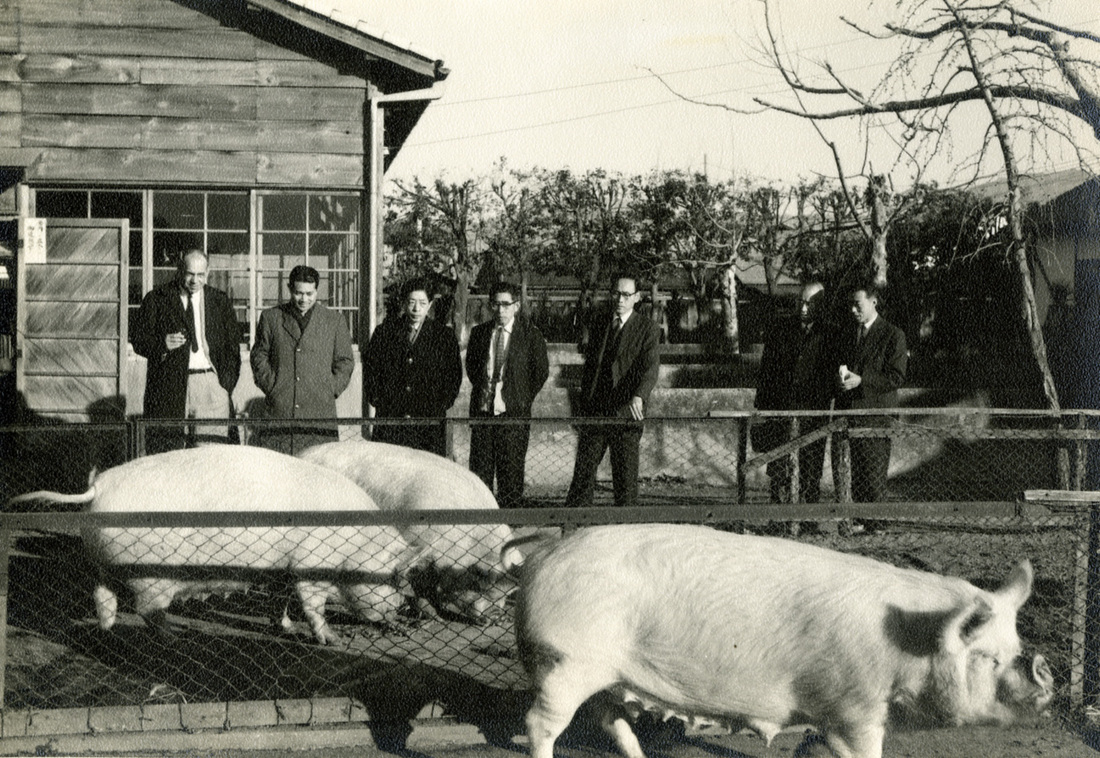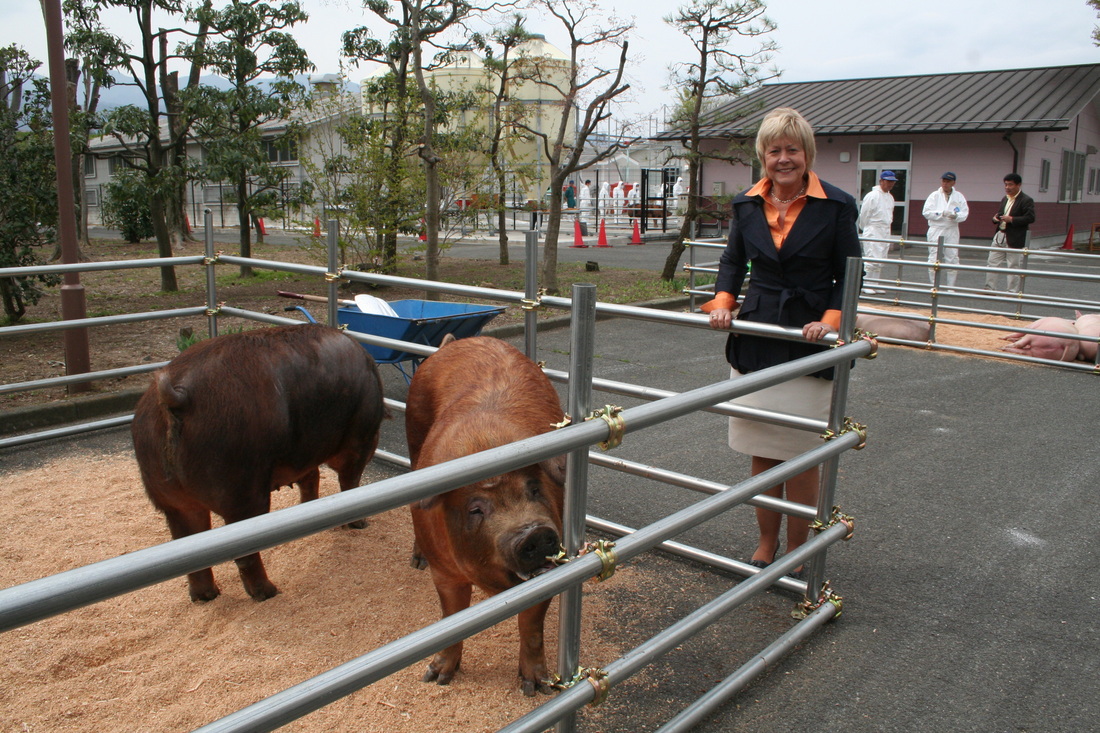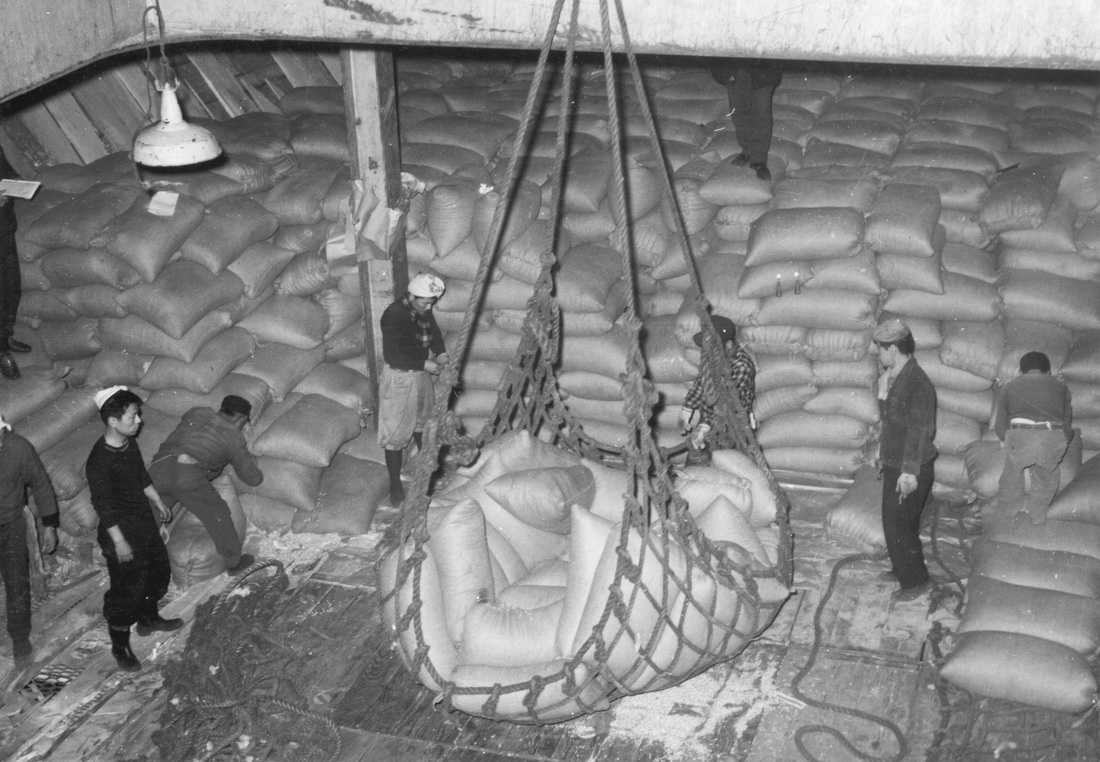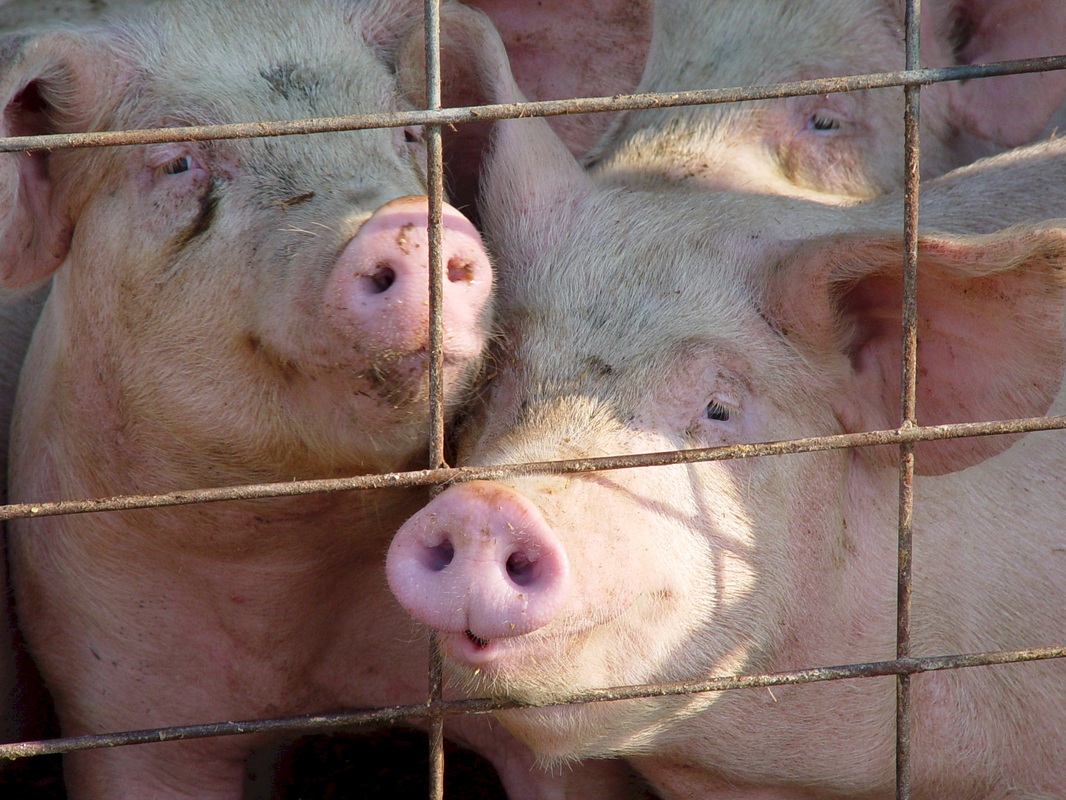Legacy of the 1960 Hog Lift to Japan
Richard Thomas' goal to restore
the livestock industry in Japan was achieved.
"Officials estimated that by the time the last of the original Iowa hogs died nine years later, their progeny totalled some 500,000 feed grain-guzzling animals. Following the 'hog lift,' Yamanashi Province and the rest of Japan began to develop a modern hog industry."
~U.S. Grains Council, "Issue 1: How Iowa Hogs Helped make Japan U.S. Top Export Market for U.S. Feed Grains."
Because of the hog lift, Japan developed a hog industry featuring unique breeds. Their herds still carry genetic markers of their Iowa ancestors.
~U.S. Grains Council, "Issue 1: How Iowa Hogs Helped make Japan U.S. Top Export Market for U.S. Feed Grains."
Because of the hog lift, Japan developed a hog industry featuring unique breeds. Their herds still carry genetic markers of their Iowa ancestors.
Efforts to open markets for U.S. grains in Japan: Successful.
Japanese farmers traditionally fed their hogs "a non-grain diet that included coconut scraps, sweet potatoes, and silkworm cocoons."
~Des Moines Register, April 10, 2010
A direct consequence of the hog lift:
"Japan imports 16 million metric tons of U.S. feed grains each year out of the 50-60 million tons that are annually shipped overseas."
~GAIN Report
Expanded Japanese markets for eggs, poultry, meat, and milk have improved nutrition in Japan and increased economic returns for American farmers.
"The people of Japan remember and appreciate what Iowa farmers, the state of Iowa, and the American government did to help them by sending the swine breeding animals to Japan and corn to feed them. Today, Japan is our largest export market for feed grains and pork."
~Iowa Secretary of Agriculture Bill Northey
~Des Moines Register, April 10, 2010
A direct consequence of the hog lift:
"Japan imports 16 million metric tons of U.S. feed grains each year out of the 50-60 million tons that are annually shipped overseas."
~GAIN Report
Expanded Japanese markets for eggs, poultry, meat, and milk have improved nutrition in Japan and increased economic returns for American farmers.
"The people of Japan remember and appreciate what Iowa farmers, the state of Iowa, and the American government did to help them by sending the swine breeding animals to Japan and corn to feed them. Today, Japan is our largest export market for feed grains and pork."
~Iowa Secretary of Agriculture Bill Northey
Reviving a sluggish hog industry in Iowa in the 1960s -- another success of Thomas' initiative.
Japan Offers Aid After Iowa's Great Flood of 1993
|
Yamanashi gave $300,000 to Iowa's recovery efforts following severe flooding in 1993.
"I was very surprised with their response [to the flood of 1993] and accepted the check at the State Fairgrounds in the show ring. Immediately after the [recent] earthquake, I sent a letter expressing our deepest concerns and offered our assistance." ~Iowa Governor Terry Branstad, E-mail to author |
Video of 1993 flood and aid presentation: TV Yamanashi (Japan) and KCRG TV (Cedar Rapids, Iowa)





